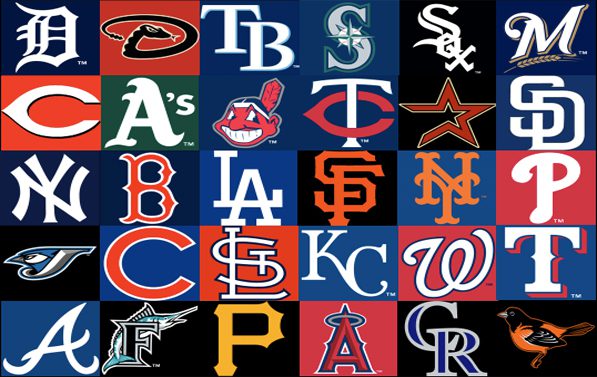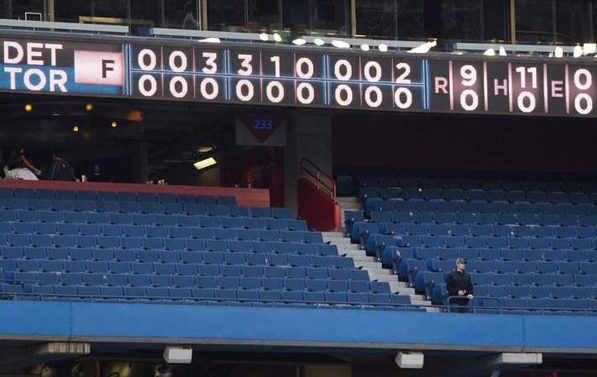
 Recently, there has been talk among baseball insiders about a potential realignment in Major League Baseball. This talk has made me think of a few questions: why this is a necessity, what realignment would look like and how baseball could make this work. The reason this process will likely take a while to happen is the resistance baseball has for change and moving from tradition. However, after serious consideration, MLB will likely make a move.
Recently, there has been talk among baseball insiders about a potential realignment in Major League Baseball. This talk has made me think of a few questions: why this is a necessity, what realignment would look like and how baseball could make this work. The reason this process will likely take a while to happen is the resistance baseball has for change and moving from tradition. However, after serious consideration, MLB will likely make a move.
The reasons supporting realignment seem to outweigh the reasons against realignment. The top two teams in each league are both in the same division: The New York Yankees and Boston Red Sox in the AL East and American League, and the Philadelphia Phillies and Atlanta Braves in the NL East and National League. Although this may seem irrelevant, think of the third and fourth place team in the AL East. The Toronto Blue Jays and Tampa Bay Devil Rays are both above .500, and would be competing, if not winning the other two divisions in the American league.
Every year, 30 teams play 162 games, and at the end of all those games only eight lucky teams get a chance to play for a championship. This leaves teams like the Blue Jays, playing almost an entire second half of meaningless baseball, knowing they have no realistic chance of making the playoffs. The Blue Jays know this, reporters know this, and fans know this. The result: attendance falling in the second half of the season. Owners do not like this fact, and realignment with an expanded postseason schedule would result in more meaningful, regular season games, and bigger audience due to being a postseason contender.
The MLB directors should support this move, because of the possibility of increased TV revenue. If more teams are in the hunt for a playoff spot, more fans will be involved, resulting in an increase in fan attention, an increase in ratings and more teams featured on network television. Other reasons for realignment include teams making the playoffs that are below .500 or would place 4th or 5th in another division, as well as allowing teams to cut down on travel costs if they were placed in East/West leagues.
With any change, some parties benefit and some parties are damaged. In Major League Baseball, that is no different. Many small-market teams would benefit from an added playoff system. The teams would benefit because fans are more likely to attend games in August and September when they are considered more meaningful. This alone should be the sole reason for realignment. Others who would benefit from realignment would be the AL East teams. Being placed in a different division or league would give each team a fair chance to play an even schedule and move out of a league with three of the better teams in baseball.
Teams that would be damaged would most likely be a team moving from the AL to NL, and having to adapt to new rules. Although a move from the NL to AL would be difficult, the contrary would eliminate the DH, a position that some teams have as their highest-paid player. Another reason this will be difficult is admitting that some teams just aren’t that good to compete in a tough division. A team like Toronto, who plays the Yankees and Red Sox more than anyone else, has to admit they cannot compete in a division that forces them to play such a tough schedule. However, it does seem fair to balance the schedule and have all teams play an even schedule. There are 162 games in a year. This is more than enough games to balance a fair schedule. These reasons will make the transition slower, but eventually the reasoning supporting realignment, increased revenue from attendance and ratings will be the driving forces for change.
| East 1 | East 2 | East 3 | West 1 | West 2 | West 3 |
| Philadelphia | NY Yankees | Boston | San Francisco | Texas | St. Louis |
| Tampa Bay | Atlanta | Detroit | Toronto | LA Dodgers | LA Angels |
| Cleveland | NY Mets | Chicago Cubs | Oakland | Kansas City | Arizona |
| Pittsburgh | Chicago WSox | Florida | Milwaukee | Houston | Minnesota |
| Cincinnati | Washington | Baltimore | Colorado | Seattle | San Diego |
The schedule would be simplified by having the standard 162 games with two four-game series and one three-game series against all teams in your respective league. This calculation results in 154 games. The final eight games will be against one team from the opposite league. The team played will be based on the records of the previous season. The lowest in each league will play each other, while the best of the league play each other. This system is similar to the NFL’s scheduling. There will be two four-game series, one home and one away during the season. This 162 game schedule is fair and simple.
The postseason will increase the current number of teams allowed from four to six teams from each league. The top two teams in each league, no matter the division, would receive a bye in the first round. The first round of playoffs will include seeds three through six in a three-game series.The winners will advance to the next round, and take on the one and two seeds. This four-team playoff will be just as the playoff system we currently have: a five game series in round two, and a seven game series for the final two rounds. This adds four teams to the playoff picture. Therefore, the race for the final playoff spot includes many more teams. With this playoff scenario and scheduling in place, divisions are no longer important. MLB may decide to return to the original league standings scenario, an East and West, where the divisions were eliminated in place of a single league standings. This along with a fair and balanced schedule, will place the top six teams in each league in the playoffs.
We are still a few years away from any realignment, but the fact that talk is happening and Commissioner Bud Selig says realignment is “inevitable,” makes way for rumors and speculation to take place.





